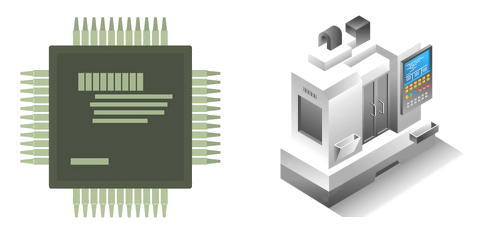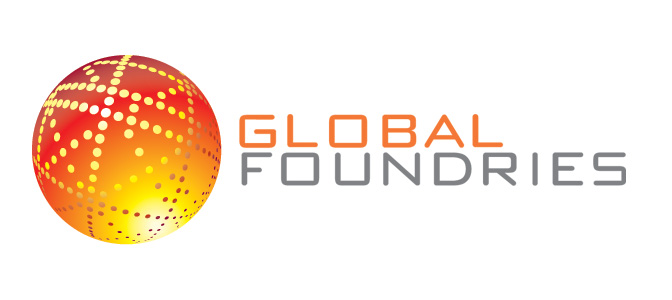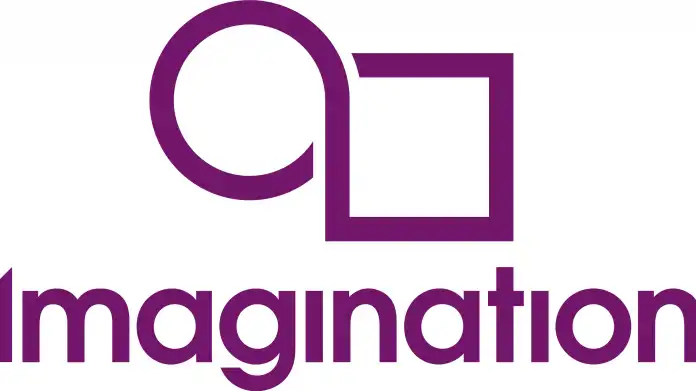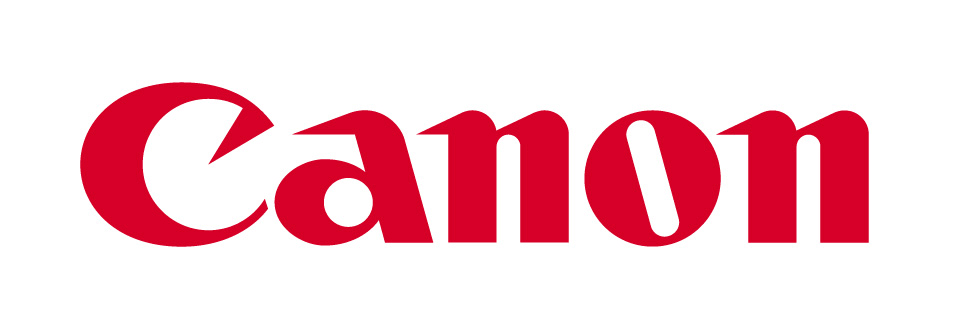
漢德百科全書 | 汉德百科全书

 California-CA
California-CA


 IT-Times
IT-Times
 IC
IC


 IT-Times
IT-Times
 Semiconductor technology
Semiconductor technology
 United States
United States

 Science and technology
Science and technology
 Global Innovators
Global Innovators


集成电路是含有电子元件的芯片,形成一个功能电路,如嵌入你的智能手机、电脑和其他电子设备内的电子元件;光子集成电路(PIC)是含有光子元件的芯片,是利用光(光子)工作的元件。在电子芯片中,电子通量通过电阻、电感、晶体管和电容器等电气元件;在光子芯片中,光子通过波导(相当于电阻或电线)、激光器(相当于晶体管)、偏振器和移相器等光学元件。
Ein integrierter Schaltkreis ist ein Chip, der elektronische Komponenten enthält, die einen funktionalen Schaltkreis bilden, wie z. B. in Ihrem Smartphone, Computer und anderen elektronischen Geräten. Ein photonischer integrierter Schaltkreis (PIC) ist ein Chip, der photonische Komponenten enthält, also Komponenten, die mit Licht (Photonen) arbeiten.
In einem elektronischen Chip durchläuft der Elektronenfluss elektrische Komponenten wie Widerstände, Induktoren, Transistoren und Kondensatoren; in einem photonischen Chip durchlaufen die Photonen optische Komponenten wie Wellenleiter (entspricht einem Widerstand oder einem elektrischen Draht), Laser (entspricht Transistoren), Polarisatoren und Phasenschieber.
 Guangdong Sheng-GD
Guangdong Sheng-GD


 IT-Times
IT-Times
 Mobile Networks
Mobile Networks


 IT-Times
IT-Times
 IC
IC


 IT-Times
IT-Times
 Processing Units - CPU, GPU, APU, TPU, VPU, FPGA, QPU, IPU, PIC
Processing Units - CPU, GPU, APU, TPU, VPU, FPGA, QPU, IPU, PIC

![]()
Complementary metal-oxide-semiconductor (engl.; ‚sich ergänzender Metall-Oxid-Halbleiter‘), Abk. CMOS, ist eine Bezeichnung für Halbleiterbauelemente, bei denen sowohl p-Kanal- als auch n-Kanal-MOSFETs auf einem gemeinsamen Substrat verwendet werden.
Unter CMOS-Technik bzw. CMOS-Technologie versteht man
- sowohl den verwendeten Halbleiterprozess, der zur Realisierung von integrierten digitalen wie analogen Schaltungen verwendet wird,
- als auch eine Logikfamilie. Die CMOS-Technologie stellt heutzutage die meistgenutzte Logikfamilie dar und wird hauptsächlich für integrierte Schaltkreise (ICs) verwendet.
Die Technik wurde 1963 von Frank Wanlass beim Halbleiterhersteller Fairchild Semiconductor entwickelt und auch patentiert.[1][2]
互补式金属氧化物半导体(英语:Complementary Metal-Oxide-Semiconductor,缩写作 CMOS;简称互补式金氧半),是一种集成电路的设计工艺,可以在硅质晶圆模板上制出NMOS(n-type MOSFET)和PMOS(p-type MOSFET)的基本元件,由于NMOS与PMOS在物理特性上为互补性,因此被称为CMOS。此一般的工艺上,可用来制作电脑电器的静态随机存取内存、微控制器、微处理器与其他数字逻辑电路系统、以及除此之外比较特别的技术特性,使它可以用于光学仪器上,例如互补式金氧半图像传感装置在一些高级数码相机中变得很常见。
互补式金属氧化物半导体具有只有在晶体管需要切换启动与关闭时才需消耗能量的优点,因此非常节省电力且发热量少,且工艺上也是最基础而最常用的半导体元件。早期的只读存储器主要就是以这种电路制作的,由于当时电脑系统的BIOS程序和参数信息都保存在ROM和SRAM中,以致在很多情况下,当人们提到“CMOS”时,实际上指的是电脑系统之中的BIOS单元,而一般的“CMOS设置”就是意指在设定BIOS的内容。
Complementary metal–oxide–semiconductor, abbreviated as CMOS /ˈsiːmɒs/, is a technology for constructing integrated circuits. CMOS technology is used in microprocessors, microcontrollers, static RAM, and other digital logic circuits. CMOS technology is also used for several analog circuits such as image sensors (CMOS sensor), data converters, and highly integrated transceivers for many types of communication. In 1963, while working for Fairchild Semiconductor, Frank Wanlass patented CMOS (US patent 3,356,858).
CMOS is also sometimes referred to as complementary-symmetry metal–oxide–semiconductor (or COS-MOS).[1] The words "complementary-symmetry" refer to the typical design style with CMOS using complementary and symmetrical pairs of p-type and n-type metal oxide semiconductor field effect transistors (MOSFETs) for logic functions.[2]
Two important characteristics of CMOS devices are high noise immunity and low static power consumption.[3] Since one transistor of the pair is always off, the series combination draws significant power only momentarily during switching between on and off states. Consequently, CMOS devices do not produce as much waste heat as other forms of logic, for example transistor–transistor logic (TTL) or N-type metal-oxide-semiconductor logic (NMOS) logic, which normally have some standing current even when not changing state. CMOS also allows a high density of logic functions on a chip. It was primarily for this reason that CMOS became the most used technology to be implemented in very-large-scale integration (VLSI) chips.
The phrase "metal–oxide–semiconductor" is a reference to the physical structure of certain field-effect transistors, having a metal gate electrode placed on top of an oxide insulator, which in turn is on top of a semiconductor material. Aluminium was once used but now the material is polysilicon. Other metal gates have made a comeback with the advent of high-κ dielectric materials in the CMOS process, as announced by IBM and Intel for the 45 nanometer node and smaller sizes.[4]
On appelle CMOS, ou Complementary Metal Oxide Semiconductor, une technologie de fabrication de composants électroniques et, par extension, les composants fabriqués selon cette technologie. Ce sont pour la plupart des circuits logiques (NAND, NOR, etc.) comme ceux de la famille Transistor-Transistor logic (TTL) mais, à la différence de ces derniers, ils peuvent être aussi utilisés comme résistance variable.
Dans ces circuits, un étage de sortie est composé d'un couple de transistors MOSFET N et P placés de manière symétrique et réalisant chacun la même fonction. Du fait de leur caractéristique de fonctionnement inversée, un transistor est passant alors que l'autre est bloquant1 (ils sont donc complémentaires, d'où l'appellation complementary).
Il CMOS (acronimo di complementary metal-oxide semiconductor), è un tipo di tecnologia utilizzata in elettronica digitale per la progettazione di circuiti integrati, alla cui base sta l'uso dell'invertitore a transistor MOSFET.
Si tratta di una struttura circuitale costituita dalla serie di una rete di "Pull-Up" ed una di "Pull-Down": la prima s'incarica di replicare correttamente il livello logico alto LL1 mentre alla seconda è destinata la gestione del livello logico basso LL0. Tale topologia circuitale fu inventata da Frank Wanlass nel 1967.
La rete di Pull-Up è costituita da MOSFET a canale P, che si "accendono" solo se la tensione presente sul gate (misurata rispetto al source) è minore della tensione di soglia. Inversamente la rete di Pull-Down è costituita da MOSFET a canale N che si accendono solo se la tensione presente sul gate (misurata rispetto al source) è maggiore della tensione di soglia.
Per comprendere come sia strutturata la tecnologia CMOS può risultare utile osservare una porta logica NOT realizzata con tecnologia CMOS. Si può notare come, nell'eventualità che il segnale d'ingresso sia a LL1, sia il solo N-MOS ad attivarsi portando l'uscita a LL0. Inversamente, con l'ingresso a LL0, è il solo P-MOS ad attivarsi portando l'uscita a LL1. Particolarità di questa porta logica è di avere una dinamica logica d'uscita piena, cioè pari alla massima tensione applicata, Vcc; inoltre né la rete di pull-up né la rete di pull-down soffre di effetto body. La componentistica realizzata in questa tecnologia è caratterizzata da un consumo di corrente estremamente basso.
El semiconductor complementario de óxido metálico o complementary metal-oxide-semiconductor (CMOS) es una de las familias lógicas empleadas en la fabricación de circuitos integrados. Su principal característica consiste en la utilización conjunta de transistores de tipo pMOS y tipo nMOS configurados de forma tal que, en estado de reposo, el consumo de energía es únicamente el debido a las corrientes parásitas, colocado en la placa base.
En la actualidad, la mayoría de los circuitos integrados que se fabrican usan la tecnología CMOS. Esto incluye microprocesadores, memorias, procesadores digitales de señales y muchos otros tipos de circuitos integrados digitales de consumo considerablemente bajo.
Drenador (D) conectada a tierra (Vss), con valor 0; el valor 0 no se propaga al surtidor (S) y por lo tanto a la salida de la puerta lógica. El transistor pMOS, por el contrario, está en estado de conducción y es el que propaga valor 1 (Vdd) a la salida.
Otra característica importante de los circuitos CMOS es que son “regenerativos”: una señal degradada que acometa una puerta lógica CMOS se verá restaurada a su valor lógico inicial 0 ó 2, siempre que aún esté dentro de los márgenes de ruido que el circuito pueda tolerar.




 Automobile
Automobile
 *Self-driving car
*Self-driving car



 Automobile
Automobile
 ***Technology
***Technology
 England
England


 IT-Times
IT-Times
 Semiconductor technology
Semiconductor technology


 IT-Times
IT-Times
 Driver assistance systems
Driver assistance systems
 United Kingdom
United Kingdom



 IT-Times
IT-Times
 Printer/Photocopier/Scanner
Printer/Photocopier/Scanner


 IT-Times
IT-Times
 Sensor
Sensor


 IT-Times
IT-Times
 Semiconductor technology
Semiconductor technology


 IT-Times
IT-Times
 IC
IC
 Japan
Japan
 Kantō
Kantō

 Life and Style
Life and Style
 Photo camera
Photo camera

 Science and technology
Science and technology
 Global Innovators
Global Innovators




快闪存储器(英语:flash memory),是一种电子式可清除程序化只读存储器的形式,允许在操作中被多次擦或写的存储器。这种科技主要用于一般性数据存储,以及在计算机与其他数字产品间交换传输数据,如储存卡与U盘。闪存是一种特殊的、以宏块抹写的EEPROM。早期的闪存进行一次抹除,就会清除掉整颗芯片上的数据。
Flash-Speicher sind digitale Speicherbausteine; die genaue Bezeichnung lautet Flash-EEPROM. Sie gewährleisten eine nichtflüchtige Speicherung bei gleichzeitig niedrigem Energieverbrauch. Flash-Speicher sind portabel und miniaturisiert, es lassen sich jedoch bei Flash-EEPROM, im Gegensatz zu gewöhnlichem EEPROM-Speicher, Bytes, die kleinsten adressierbaren Speichereinheiten, nicht einzeln löschen oder überschreiben. Flash-Speicher sind auch langsamer als Festwertspeicher (ROM).
Flash memory is an electronic (solid-state) non-volatile computer storage medium that can be electrically erased and reprogrammed.
Toshiba developed flash memory from EEPROM (electrically erasable programmable read-only memory) in the early 1980s and introduced it to the market in 1984.[citation needed] The two main types of flash memory are named after the NAND and NOR logic gates. The individual flash memory cells exhibit internal characteristics similar to those of the corresponding gates.
While EPROMs had to be completely erased before being rewritten, NAND-type flash memory may be written and read in blocks (or pages) which are generally much smaller than the entire device. NOR-type flash allows a single machine word (byte) to be written – to an erased location – or read independently.
The NAND type operates primarily in memory cards, USB flash drives, solid-state drives (those produced in 2009 or later), and similar products, for general storage and transfer of data. NAND or NOR flash memory is also often used to store configuration data in numerous digital products, a task previously made possible by EEPROM or battery-powered static RAM. One key disadvantage of flash memory is that it can only endure a relatively small number of write cycles in a specific block.[1]
Example applications of both types of flash memory include personal computers, PDAs, digital audio players, digital cameras, mobile phones, synthesizers, video games, scientific instrumentation, industrial robotics, and medical electronics. In addition to being non-volatile, flash memory offers fast read access times, although not as fast as static RAM or ROM.[2] Its mechanical shock resistance helps explain its popularity over hard disks in portable devices, as does its high durability, ability to withstand high pressure, temperature and immersion in water, etc.[3]
Although flash memory is technically a type of EEPROM, the term "EEPROM" is generally used to refer specifically to non-flash EEPROM which is erasable in small blocks, typically bytes.[citation needed] Because erase cycles are slow, the large block sizes used in flash memory erasing give it a significant speed advantage over non-flash EEPROM when writing large amounts of data. As of 2013, flash memory costs much less than byte-programmable EEPROM and had become the dominant memory type wherever a system required a significant amount of non-volatile solid-state storage.
La mémoire flash est une mémoire de masse à semi-conducteurs ré-inscriptible, c'est-à-dire une mémoire possédant les caractéristiques d'une mémoire vive mais dont les données ne disparaissent pas lors d'une mise hors tension. Ainsi, la mémoire flash stocke les bits de données dans des cellules de mémoire, mais les données sont conservées en mémoire lorsque l'alimentation électrique est coupée.
Sa vitesse élevée, sa durée de vie et sa faible consommation (qui est même nulle au repos) la rendent très utile pour de nombreuses applications : appareils photo numériques, téléphones cellulaires, imprimantes, assistants personnels (PDA), ordinateurs portables ou dispositifs de lecture et d'enregistrement sonore comme les baladeurs numériques, clés USB. De plus, ce type de mémoire ne possède pas d'éléments mécaniques, ce qui lui confère une grande résistance aux chocs.
La memoria flash, anche chiamata flash memory, è una tipologia di memoria a stato solido, di tipo non volatile, che per le sue prestazioni può anche essere usata come memoria a lettura-scrittura. Quando viene utilizzata come ROM viene anche chiamata flash ROM.
In una memoria flash le informazioni vengono registrate in un vettore di floating gate MOSFET, una tipologia di transistor ad effetto di campo in grado di mantenere carica elettrica per un tempo lungo. Ogni transistor costituisce una "cella di memoria" che conserva il valore di un bit. Le nuove flash utilizzano delle celle multilivello che permettono di registrare il valore di più bit attraverso un solo transistor.
Diversamente dalle tecnologie precedenti, la tecnologia Flash ha reso possibile il salvataggio o la cancellazione di dati in un unico passo, introducendo quindi un incredibile guadagno in velocità, e grazie alla non-volatilità è usata frequentemente nelle fotocamere digitali, nei lettori di musica portatili, nei cellulari, nelle pendrive (chiavette), nei palmari, nei moderni computer portatili e in molti altri dispositivi che richiedono un'elevata portabilità e una buona capacità di memoria per il salvataggio dei dati.
Esistono principalmente due tipologie di memorie flash, dette NOR flash e NAND flash, che differiscono per l'architettura ed il procedimento di programmazione. Vi è anche una tipologia ibrida, la AND flash, che sfrutta le caratteristiche di entrambe, NOR e NAND.
La memoria flash derivada de las siglas EEPROM permite la lectura y escritura de múltiples posiciones de memoria en la misma operación. Gracias a ello, la tecnología flash, mediante impulsos eléctricos, permite velocidades de funcionamiento muy superiores frente a la tecnología EEPROM primigenia, que sólo permitía actuar sobre una única celda de memoria en cada operación de programación. Se trata de la tecnología empleada en los dispositivos denominados memoria USB.

 Companies
Companies